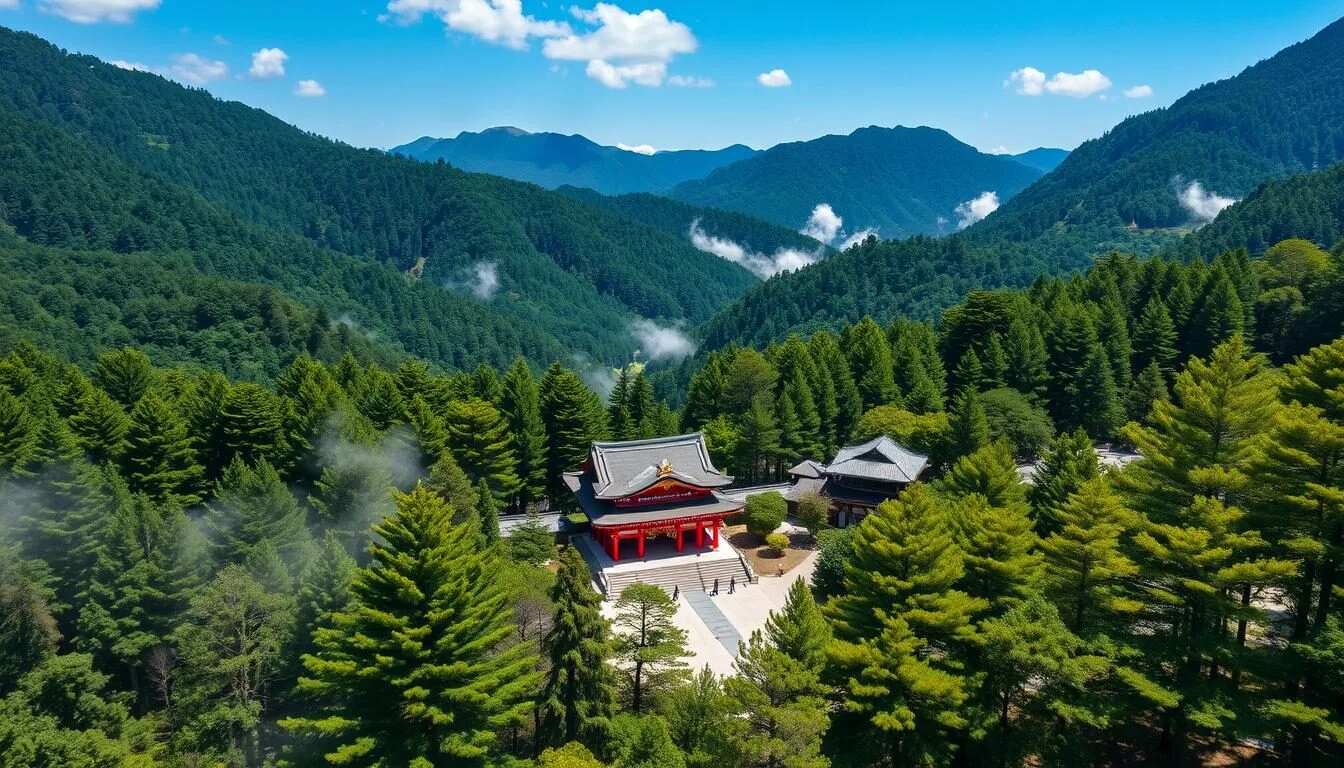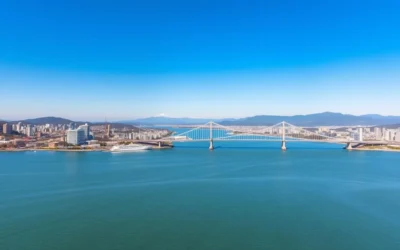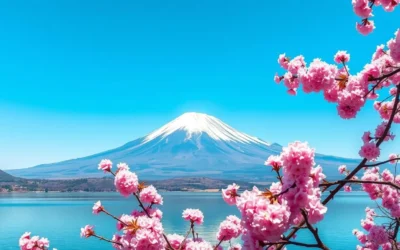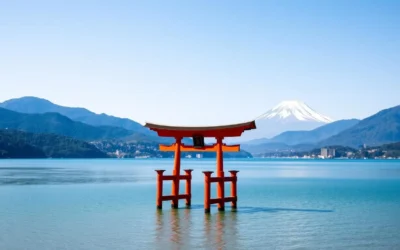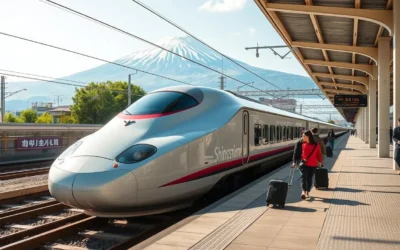✓ Accommodations✓ Flights✓ Rental Cars✓ Tours & Activities
Did you know that Nikko’s Toshogu Shrine contains over 5,000 intricate wood carvings and is adorned with more than 2.5 million sheets of gold leaf? This lavish display of craftsmanship is just one example of why Nikko has been captivating visitors for centuries. Located just two hours from Tokyo, this UNESCO World Heritage site offers a perfect blend of stunning natural landscapes and cultural treasures that showcase Japan’s rich heritage and spiritual traditions.
Getting to Nikko, Japan
Reaching Nikko from Tokyo is straightforward, with several convenient transportation options available. The journey takes approximately two hours, making Nikko perfect for both day trips and extended stays.
By Train
The most popular way to reach Nikko is by train. You have two main options:
- Tobu Railway: Direct limited express trains (Revaty Kegon or Spacia X) depart from Tobu Asakusa Station in Tokyo. The journey takes about 2 hours and costs approximately ¥2,700 one-way.
- JR Railway: Take the JR Tohoku Shinkansen from Tokyo or Ueno Station to Utsunomiya, then transfer to the JR Nikko Line. This route takes about 2 hours and is covered by the Japan Rail Pass.
Ready to Book Your Trip to Nikko?
Find the best flight deals to Tokyo and start your Nikko adventure!
By Bus
Highway buses operate between Tokyo (Shinjuku) and Nikko. The journey takes approximately 2.5 hours and can be more economical than the train, with tickets starting around ¥2,500 one-way.

By Car
Driving to Nikko takes approximately 2.5 hours from central Tokyo via the Tohoku Expressway. Having a car gives you the flexibility to explore the more remote areas of Nikko National Park at your own pace.
Explore Nikko at Your Own Pace
Rent a car and discover hidden gems throughout Nikko National Park.
Planning Your Journey to Nikko
Best Time to Visit
Nikko is beautiful year-round, but each season offers a unique experience:
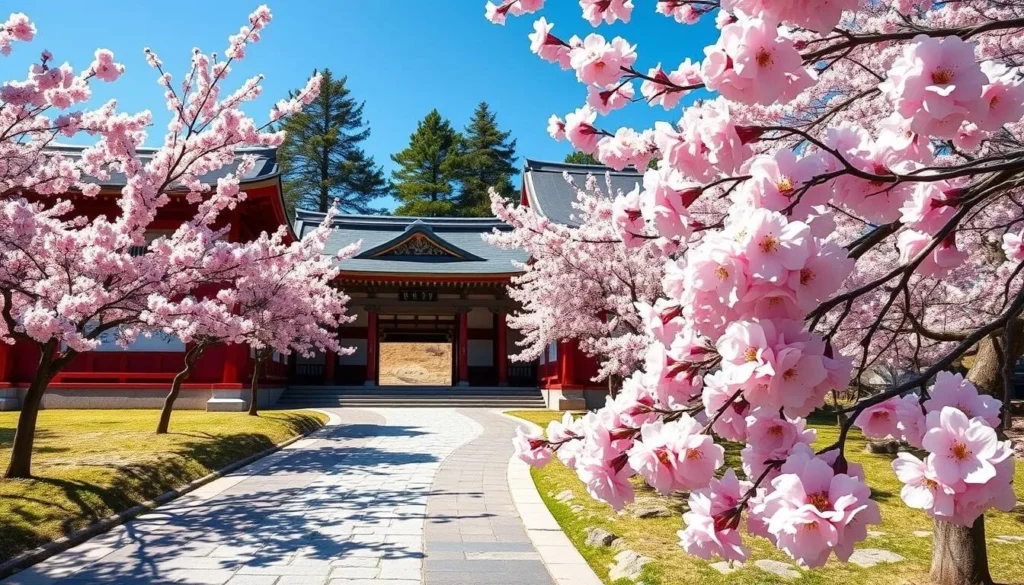
Spring (April-May)
Cherry blossoms bloom in April, while azaleas and wisteria create colorful displays in May. The weather is mild and pleasant, perfect for exploring both the shrine complex and natural areas.
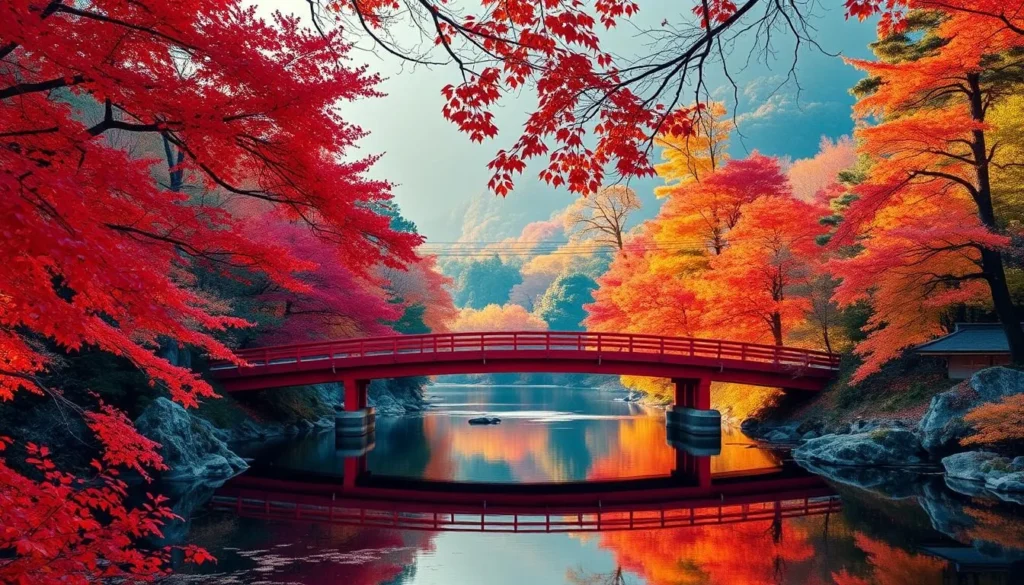
Autumn (October-November)
The most popular season to visit Nikko, when the mountains explode with vibrant red, orange, and gold foliage. The contrast of autumn colors against the ornate shrines creates breathtaking photo opportunities.
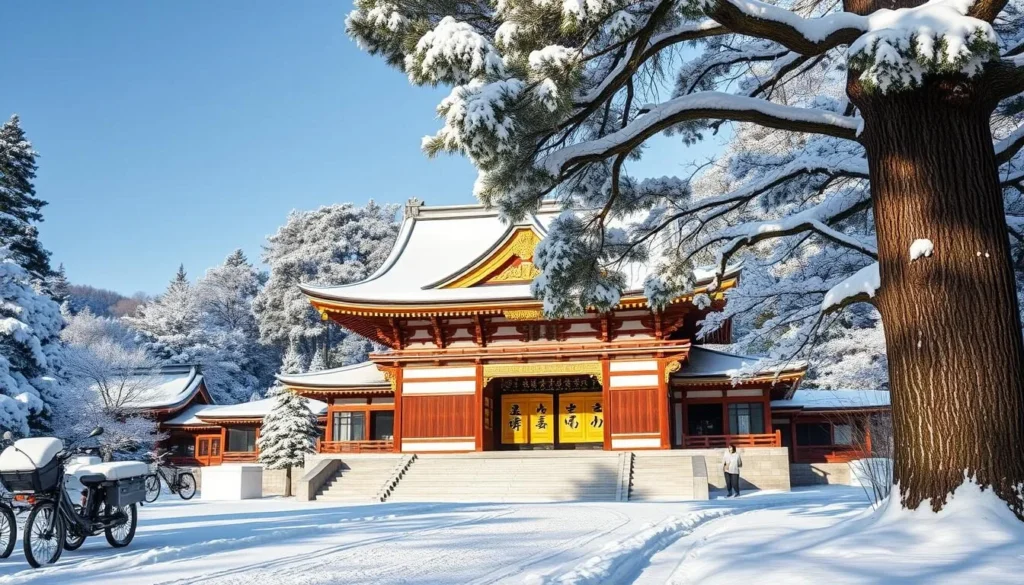
Winter (December-February)
A magical time when snow blankets the shrines and mountains. Kegon Falls partially freezes, creating a spectacular ice formation. Fewer tourists mean more peaceful exploration of the World Heritage sites.
How Long to Stay
While Nikko is popular as a day trip from Tokyo, staying overnight allows you to experience more of what the area offers:
Day Trip (8-10 hours)
- Focus on the UNESCO World Heritage shrine and temple complex
- Brief visit to Shinkyo Bridge
- Possibly one additional attraction like Kegon Falls
- Ideal for travelers with limited time in Japan
Overnight Stay (2-3 days)
- Comprehensive exploration of the shrine complex
- Time to visit Lake Chuzenji and Kegon Falls
- Hiking opportunities in Nikko National Park
- Experience staying at a traditional ryokan or onsen hotel

What to Pack
Depending on the season, here are some essentials to bring for your Nikko visit:
- Comfortable walking shoes: The shrine complex and hiking trails involve considerable walking on uneven surfaces.
- Layers of clothing: Mountain weather can change quickly, especially around Lake Chuzenji.
- Rain gear: Nikko receives more rainfall than Tokyo, so a light raincoat or umbrella is recommended year-round.
- Camera: The ornate shrines and natural beauty provide countless photo opportunities.
- Cash: Some smaller establishments and attractions may not accept credit cards.
Top Attractions in Nikko, Japan
UNESCO World Heritage Shrine Complex
The crown jewel of Nikko is its collection of shrines and temples, collectively designated as a UNESCO World Heritage site. These structures represent some of Japan’s most ornate religious architecture.
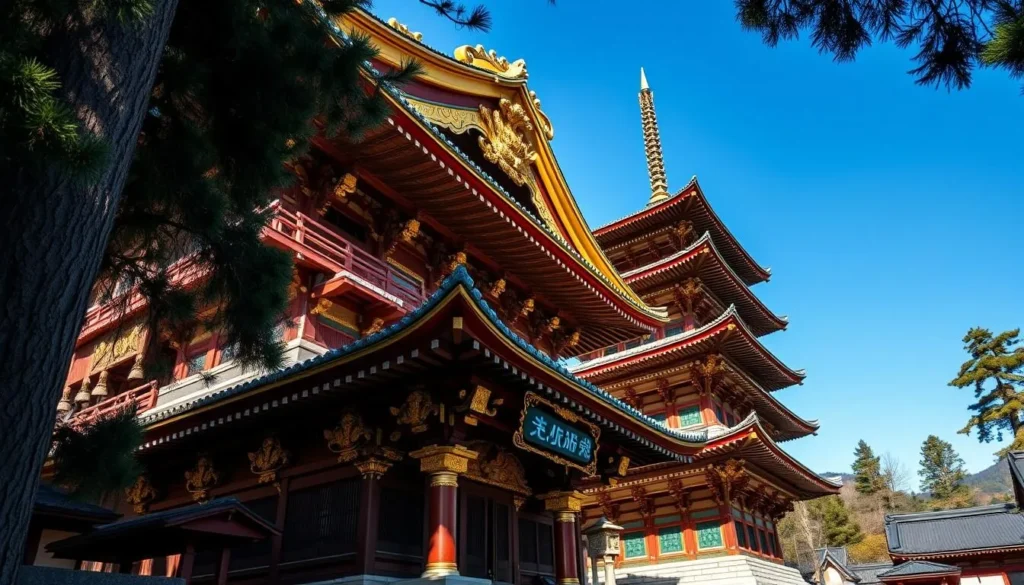
Toshogu Shrine
The most lavish of Nikko’s religious sites, Toshogu Shrine is the final resting place of Tokugawa Ieyasu, the founder of the Tokugawa Shogunate that ruled Japan for over 250 years. Unlike many of Japan’s more austere shrines, Toshogu is a riot of color and intricate carvings.
- Five-Story Pagoda: A stunning vermilion structure greeting visitors at the entrance.
- Yomeimon Gate: Often called the “Sunset Gate,” it’s considered one of Japan’s architectural masterpieces with over 500 exquisite carvings.
- Three Wise Monkeys: The famous “see no evil, hear no evil, speak no evil” carving is found on the Sacred Stable building.
- Sleeping Cat (Nemuri-neko): A small but famous carving representing peace in the realm.
- Tokugawa Ieyasu’s Tomb: Located up a flight of 200 stone steps behind the main shrine buildings.
Visitor Information: Toshogu Shrine is open from 8:00 AM to 5:00 PM (April to October) and 8:00 AM to 4:00 PM (November to March). Admission costs ¥1,300 for adults. Photography is permitted in most areas, but not inside certain buildings.
Futarasan Shrine
Founded in 782, this shrine is dedicated to the deities of Nikko’s three most sacred mountains: Mt. Nantai, Mt. Nyoho, and Mt. Taro. Much older and more subdued than Toshogu, Futarasan offers a peaceful contrast to its ornate neighbor.
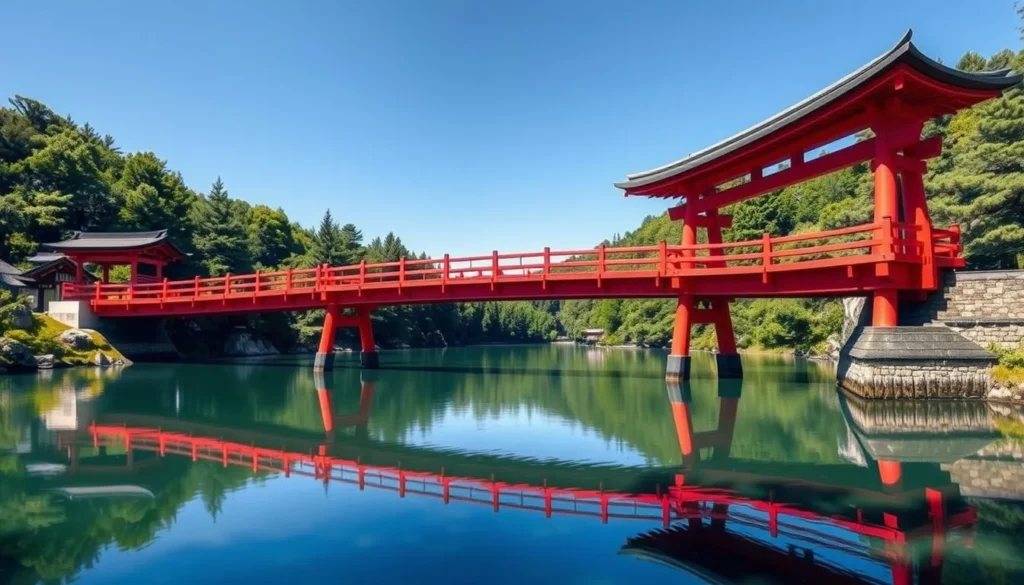
Futarasan Shrine also owns the iconic Shinkyo Bridge, considered one of Japan’s three most beautiful bridges. According to legend, when the first priest attempted to cross the Daiya River, a god appeared and released two snakes that formed a bridge.
Rinnoji Temple
Nikko’s most important Buddhist temple was founded in the 8th century. Its main hall, Sanbutsudo, houses three large, gold-lacquered wooden statues representing Nikko’s three mountain deities in Buddhist form, showcasing the historical blending of Buddhist and Shinto beliefs.
Experience Nikko’s Sacred Sites
Book a guided tour of Nikko’s UNESCO World Heritage shrines and temples to fully appreciate their historical and cultural significance.
Book a Guided Tour
Natural Wonders of Nikko National Park
Beyond its cultural treasures, Nikko is blessed with stunning natural landscapes that make up Nikko National Park. The park’s diverse ecosystems range from dense forests to alpine meadows.
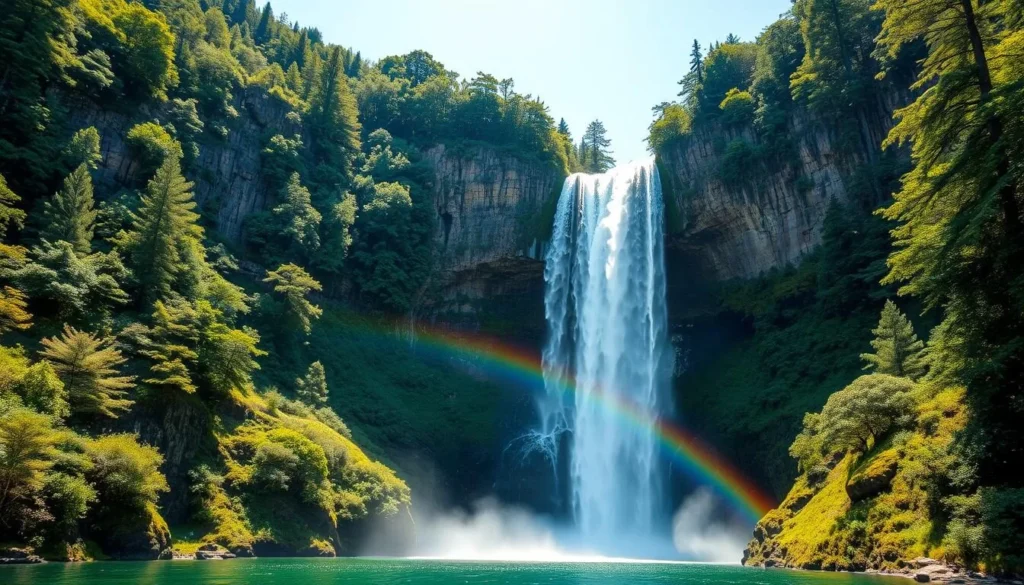
Kegon Falls
One of Japan’s three most beautiful waterfalls, Kegon Falls plunges 97 meters from Lake Chuzenji in a single dramatic drop. The falls are spectacular year-round but offer different experiences each season—surrounded by greenery in summer, fiery foliage in autumn, and partially frozen in winter.
An observation platform at the base of the falls (accessible via elevator for ¥550) provides an up-close view of the thundering cascade.
Lake Chuzenji
Formed by an eruption of Mt. Nantai about 20,000 years ago, this scenic lake sits at an elevation of 1,269 meters. The lake’s shores are dotted with attractions including:
- Chuzenji Onsen: A hot spring resort area with traditional ryokan.
- Italian Embassy Villa Memorial Park: A former summer residence now open to the public.
- British Embassy Villa Memorial Park: Another historic diplomatic retreat with beautiful lake views.
- Boat Cruises: Sightseeing boats offer a different perspective of the surrounding mountains.
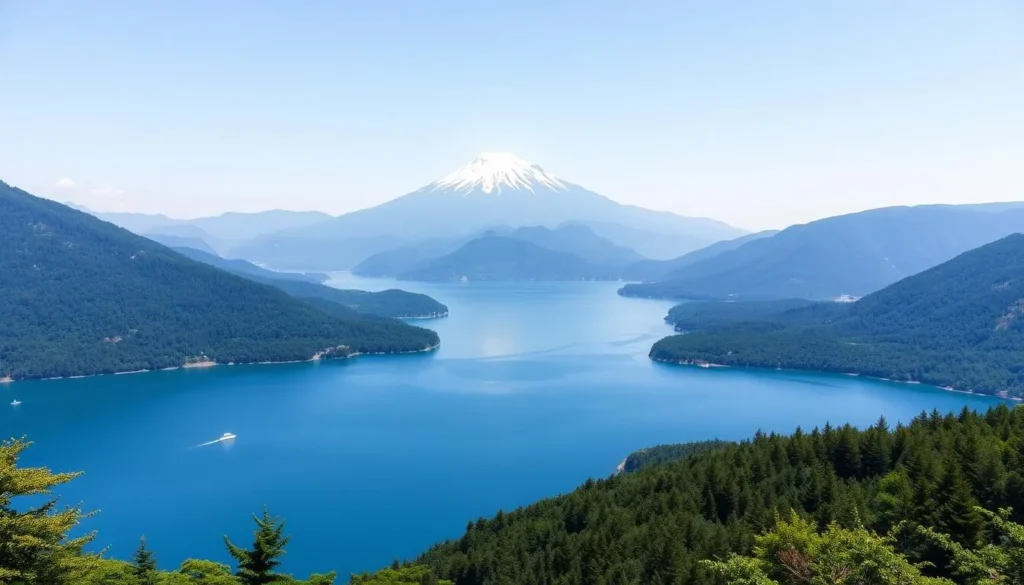
Hiking Trails
Nikko offers numerous hiking opportunities for all skill levels:
Beginner Trails
- Senjogahara Marshland: A flat 3-hour loop through scenic wetlands with boardwalks.
- Kanmangafuchi Abyss: An easy walk alongside the Daiya River with rows of stone Jizo statues.
Advanced Trails
- Mt. Nantai: A challenging 5-6 hour round-trip climb up Nikko’s sacred mountain (2,486m).
- Mt. Nyoho: A full-day hike offering panoramic views of the Nikko region.
Where to Stay in Nikko, Japan
While many visitors experience Nikko as a day trip from Tokyo, staying overnight allows you to explore at a more relaxed pace and experience the area’s natural beauty when day-trippers have departed.
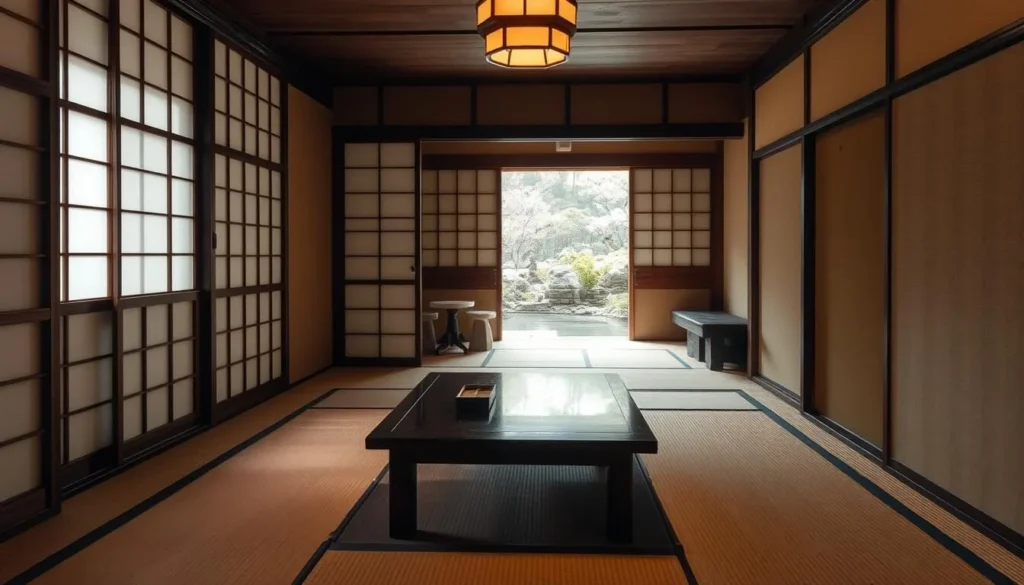
Accommodation Areas
Nikko Town Center
Staying near Tobu-Nikko Station or JR Nikko Station provides convenient access to the World Heritage sites and transportation. This area offers a range of hotels, from budget to mid-range, and is ideal for those primarily interested in the historical attractions.
Chuzenji Onsen
Located on the shores of Lake Chuzenji, this hot spring resort area offers traditional ryokan and modern hotels with natural onsen baths. Staying here puts you close to Kegon Falls and the natural attractions of Nikko National Park.
Kinugawa Onsen
About 30 minutes from central Nikko, this popular hot spring town along the Kinugawa River offers numerous ryokan and resort hotels. The area is known for its therapeutic waters and makes a good base for exploring both Nikko and the surrounding Tochigi Prefecture.
Accommodation Types
Nikko offers various accommodation styles to suit different preferences and budgets:
- Traditional Ryokan: Experience authentic Japanese hospitality with tatami rooms, futon bedding, kaiseki multi-course meals, and often private or public onsen baths.
- Modern Hotels: Western-style accommodations with standard amenities, particularly concentrated near the train stations.
- Luxury Resorts: High-end properties like The Ritz-Carlton Nikko offer premium accommodations with lake views and extensive facilities.
- Budget Options: Guesthouses and minshuku (family-run B&Bs) provide affordable alternatives for budget-conscious travelers.
Pro Tip: If staying at a ryokan, book the half-board option (dinner and breakfast included) to experience traditional Japanese cuisine using local ingredients like Nikko’s famous yuba (tofu skin).
Dining in Nikko
Nikko offers a variety of dining options, from traditional Japanese cuisine to international fare. The area is particularly known for several local specialties.

Local Specialties
- Yuba (Tofu Skin): Nikko’s most famous culinary delight, yuba is the skin that forms on the surface when making tofu. It’s served in various ways—fresh, dried, in soups, or wrapped around other ingredients.
- Yuba Manju: Sweet bean-filled buns incorporating yuba in the dough.
- Nikko Soba: Buckwheat noodles often served with yuba toppings.
- Tochigi Wagyu: High-quality beef from the surrounding Tochigi Prefecture.
- Mountain Vegetables: Seasonal wild vegetables (sansai) harvested from the surrounding mountains.
Where to Eat
Dining options are concentrated in several areas:
Near the Shrine Complex
The area around Toshogu Shrine has numerous restaurants catering to tourists, serving everything from quick meals to traditional Japanese cuisine. Many specialize in yuba dishes.
Around the Train Stations
Both Tobu-Nikko and JR Nikko stations have a selection of restaurants and cafes, including some serving Western food for those seeking familiar options.
Lake Chuzenji Area
Restaurants around the lake often feature fresh local fish and seasonal ingredients with scenic views.
Ryokan Dining
If staying at a traditional ryokan, the included meals are often the highlight, showcasing local specialties in an elaborate multi-course format.
Dining Tip: Many restaurants close relatively early in Nikko (around 5-6 PM), especially in the shrine area. Plan your meals accordingly or consider dining at your accommodation if staying overnight.
Getting Around Nikko
Nikko’s attractions are spread across a fairly large area, from the shrine complex in the town center to Lake Chuzenji in the mountains. Understanding your transportation options will help you maximize your time.
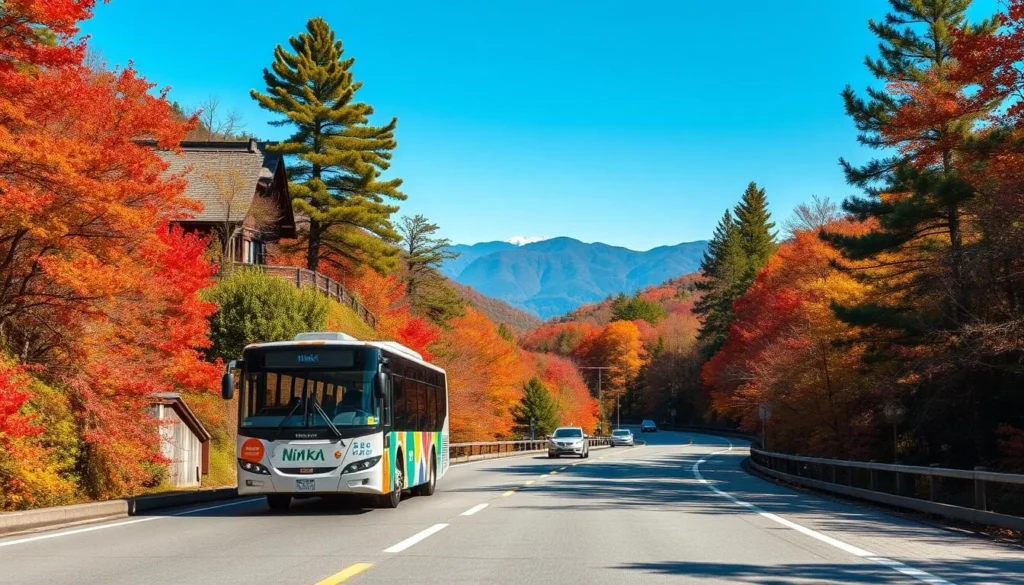
Public Transportation
- Buses: The most convenient way to get around Nikko. The World Heritage Sightseeing Bus connects the train stations to the shrine complex, while the Chuzenji Onsen Bus travels to Lake Chuzenji and Kegon Falls via the scenic Irohazaka winding road.
- Bus Passes: Consider purchasing a Nikko All Area Pass (¥4,520 for 2 days) or the Chuzenji Onsen Free Pass (¥2,000) for unlimited bus rides in their respective areas.
- Taxis: Readily available near the train stations and major attractions, taxis provide a convenient but more expensive option.
Self-Driving
Renting a car gives you the flexibility to explore at your own pace, especially for reaching more remote areas of Nikko National Park. The drive from Tokyo takes about 2.5 hours, and parking is available at major attractions (typically ¥500-1,000 per day).
Explore Nikko at Your Own Pace
Rent a car to discover hidden gems throughout Nikko National Park and beyond.
Walking
The shrine complex is best explored on foot. From the train stations to the shrine area is about a 30-40 minute walk or a short bus ride. Within the shrine complex, expect to spend several hours walking between the various buildings and attractions.
Practical Tips for Visiting Nikko
Saving Money
- Combination Tickets: Purchase the “Nikko All Shrines and Temples Pass” (¥1,000) for discounted admission to the major religious sites.
- Transportation Passes: The Nikko All Area Pass includes round-trip train fare from Tokyo and unlimited bus rides in Nikko.
- Bring Lunch: Pack a bento or picnic lunch to enjoy in one of Nikko’s scenic spots to save on restaurant costs.
Cultural Etiquette
As a site of great religious and historical importance, visitors should observe proper etiquette when visiting Nikko’s shrines and temples:
- Remove hats when entering shrine buildings
- Speak quietly and respectfully in sacred areas
- Follow photography restrictions where indicated
- Wash your hands and mouth at the purification fountains before entering shrines
- Bow slightly when entering and leaving shrine buildings

Weather Considerations
Nikko’s mountain location means weather can be unpredictable and significantly cooler than Tokyo:
- Temperatures are typically 5-10°C cooler than Tokyo
- Rain is common year-round, with June being the wettest month
- Snow is possible from December through March, especially in higher elevations
- Fog frequently forms around Lake Chuzenji, sometimes obscuring views
Insider Tip: Check the weather forecast before visiting Kegon Falls or Lake Chuzenji. Clear days offer the best views, while foggy conditions can completely obscure these natural attractions.
Language
While English signage is available at major attractions, having a few basic Japanese phrases can enhance your experience:
| English | Japanese | Pronunciation |
| Hello | こんにちは | Kon-ni-chi-wa |
| Thank you | ありがとう | A-ri-ga-to |
| Excuse me | すみません | Su-mi-ma-sen |
| Where is…? | …はどこですか | …wa do-ko des-ka |
Seasonal Highlights in Nikko
Each season transforms Nikko in unique ways, offering visitors distinctly different experiences throughout the year.
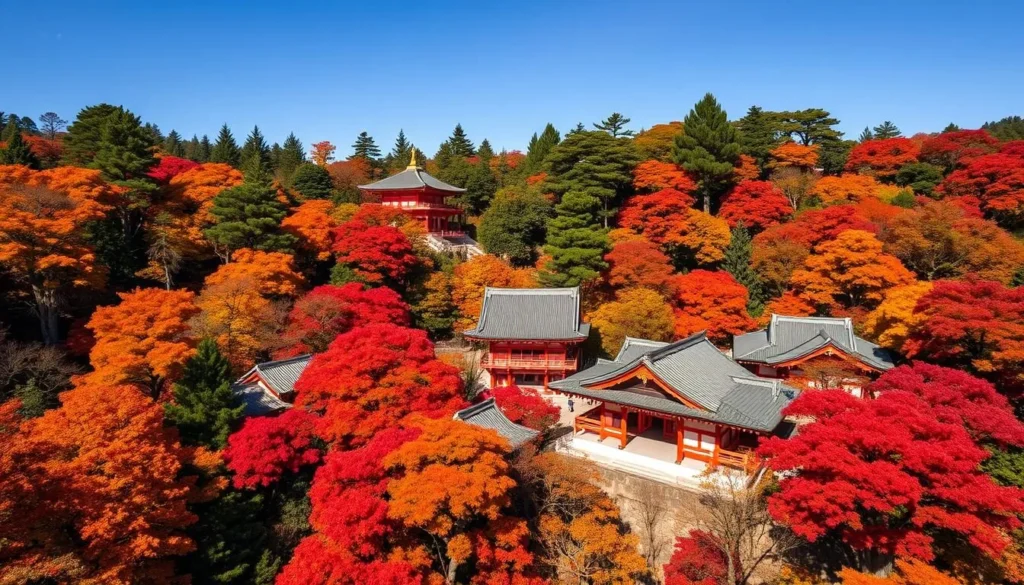
Spring (March-May)
As winter recedes, Nikko gradually awakens with blooming flowers and fresh greenery:
- Cherry Blossoms: While not as famous as other cherry blossom destinations, Nikko’s sakura typically bloom in mid-April, about two weeks later than Tokyo.
- Azaleas and Wisteria: May brings colorful displays at Shoyoen Garden near Rinnoji Temple.
- Nikko Toshogu Grand Spring Festival: Held May 17-18 annually, featuring a procession of over 1,000 samurai warriors (Yabusame horseback archery on May 17).
Summer (June-August)
Summer offers pleasant temperatures for exploring, especially in the higher elevations:
- Lush Greenery: The mountains and forests are at their most verdant.
- Hiking Season: The best time to climb Mt. Nantai and explore the higher trails.
- Refreshing Waterfalls: Kegon Falls and other cascades are at their most powerful after the rainy season.
- Summer Festivals: Various local matsuri (festivals) throughout the season.
Autumn (September-November)
The most popular season to visit Nikko, when the mountains transform into a canvas of red, orange, and gold:
- Koyo (Autumn Leaves): Peak colors typically occur in late October at the shrine complex and early to mid-October at higher elevations like Lake Chuzenji.
- Nikko Toshogu Grand Autumn Festival: Held October 16-17 annually, featuring traditional performances and ceremonies.
- Photography: The contrast of colorful foliage against the ornate shrine buildings creates spectacular photo opportunities.
Experience Nikko’s Autumn Splendor
Book a guided autumn foliage tour to see Nikko’s most spectacular fall colors with expert commentary.
Book Autumn Tour
Winter (December-February)
A magical time when snow transforms Nikko into a winter wonderland:
- Snow-Covered Shrines: The ornate architecture takes on a serene beauty when dusted with snow.
- Frozen Kegon Falls: The waterfall partially freezes, creating a spectacular natural ice sculpture.
- Winter Illuminations: Special lighting events at various locations.
- Fewer Crowds: A peaceful time to explore the normally busy shrine complex.
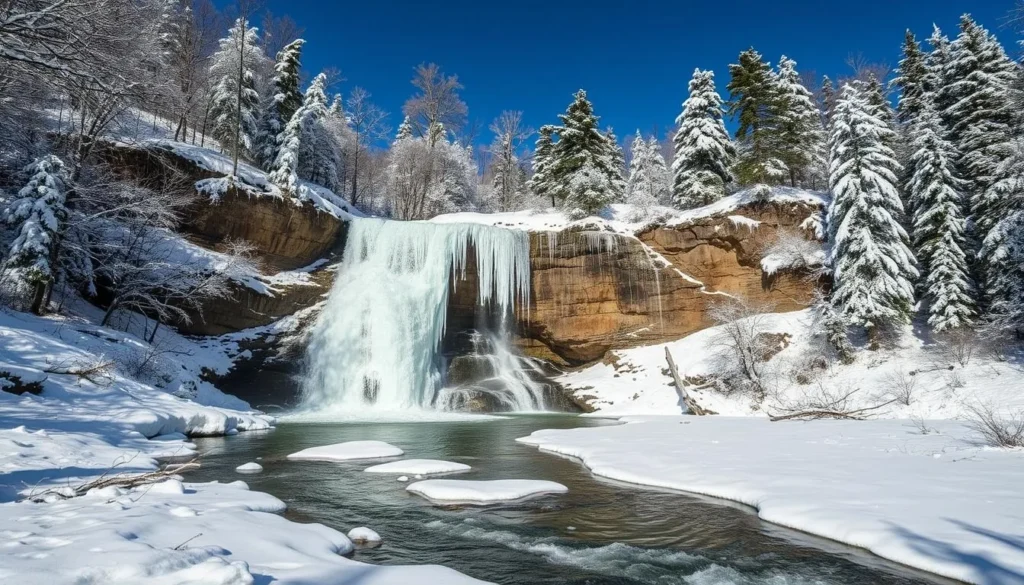
Sample Day Trip Itinerary
If you’re visiting Nikko as a day trip from Tokyo, here’s a suggested itinerary to make the most of your time:
- 7:30 AM: Depart from Tobu Asakusa Station on the limited express Revaty Kegon bound for Tobu-Nikko Station.
- 9:30 AM: Arrive at Tobu-Nikko Station. Purchase a bus pass and shrine combination ticket at the tourist information center.
- 9:45 AM: Take the bus to Shinkyo Bridge. Spend 15-20 minutes admiring and photographing this iconic structure.
- 10:15 AM: Walk up to the shrine complex and begin exploring Rinnoji Temple’s Sanbutsudo Hall and Treasure House with its beautiful garden.
- 11:15 AM: Visit Toshogu Shrine, allowing at least 1.5 hours to fully appreciate its elaborate architecture and carvings.
- 1:00 PM: Enjoy lunch at one of the restaurants near the shrine complex, sampling local specialties like yuba.
- 2:00 PM: Visit Futarasan Shrine to complete your tour of the UNESCO World Heritage site.
- 2:45 PM: Take the bus to Kegon Falls. Ride the elevator down to the observation platform for an up-close view of the waterfall.
- 4:00 PM: Return to Tobu-Nikko Station by bus.
- 4:30 PM: Depart for Tokyo, arriving back around 6:30 PM.
Time-Saving Tip: If you’re short on time, focus on Toshogu Shrine as the highlight of the shrine complex. For nature lovers, prioritize either the shrine complex or Kegon Falls/Lake Chuzenji, as trying to see everything in one day can be rushed.
Why Nikko Should Be on Your Japan Itinerary
Nikko offers a perfect blend of Japan’s most treasured elements—exquisite traditional architecture, profound spiritual heritage, and breathtaking natural beauty. Whether you’re marveling at the golden splendor of Toshogu Shrine, feeling the mist from Kegon Falls on your face, or simply soaking in the tranquility of Lake Chuzenji, Nikko provides a multi-sensory experience that captures the essence of Japan beyond its bustling cities. Just two hours from Tokyo yet worlds away in atmosphere, Nikko invites you to step back in time and connect with both Japan’s cultural legacy and its natural wonders. As the Japanese saying goes, “Never say ‘magnificent’ until you’ve seen Nikko”—words that ring true for every visitor fortunate enough to discover this extraordinary destination.
Ready to Experience Nikko?
Start planning your journey to this UNESCO World Heritage treasure!
—
The above is subject to change.
Check back often to TRAVEL.COM for the latest travel tips and deals.
